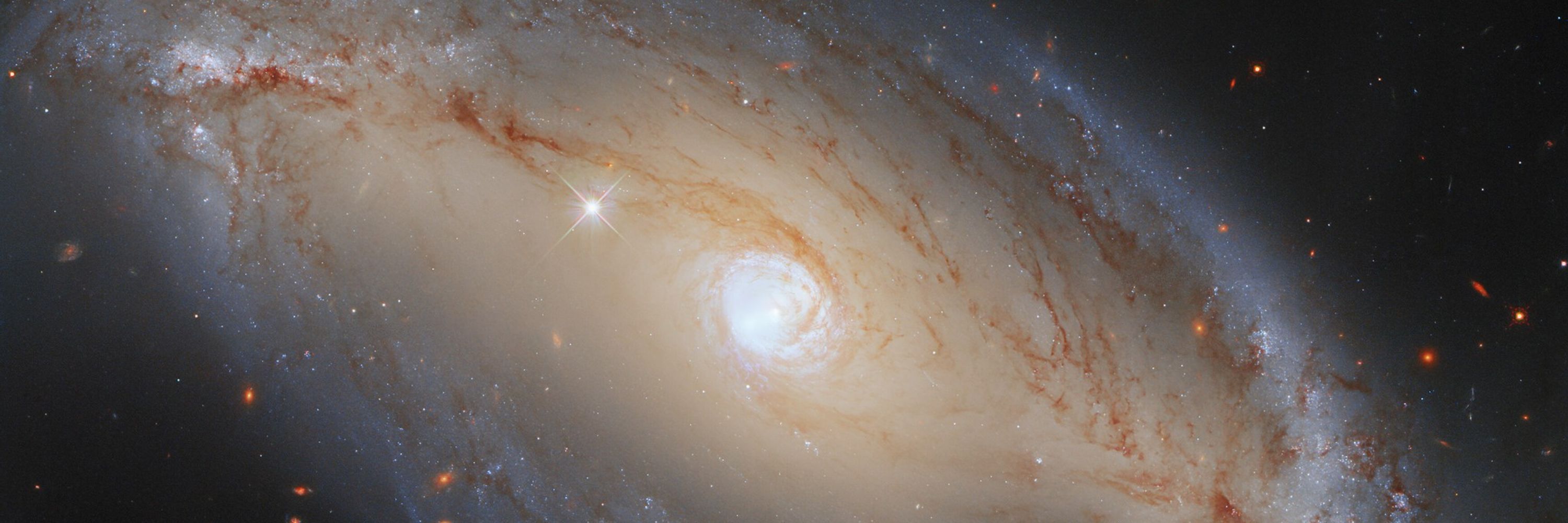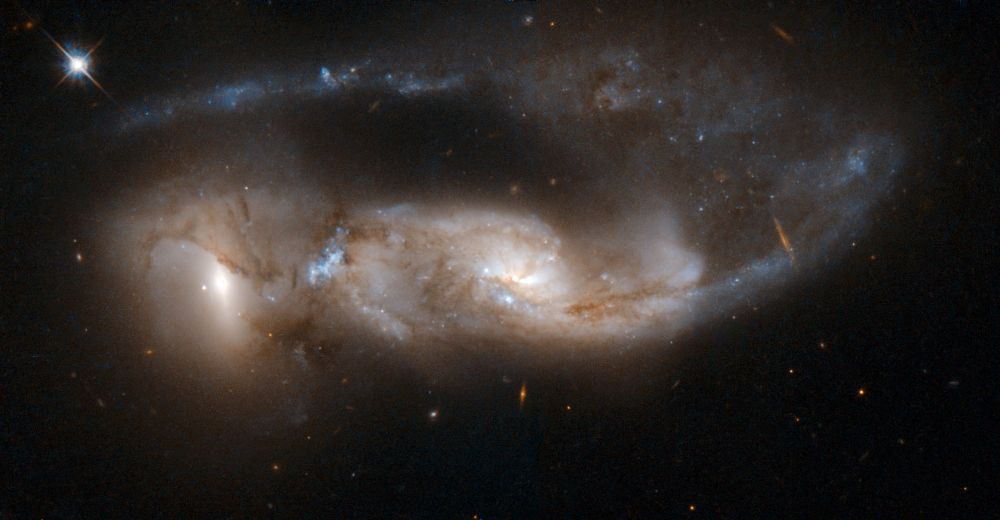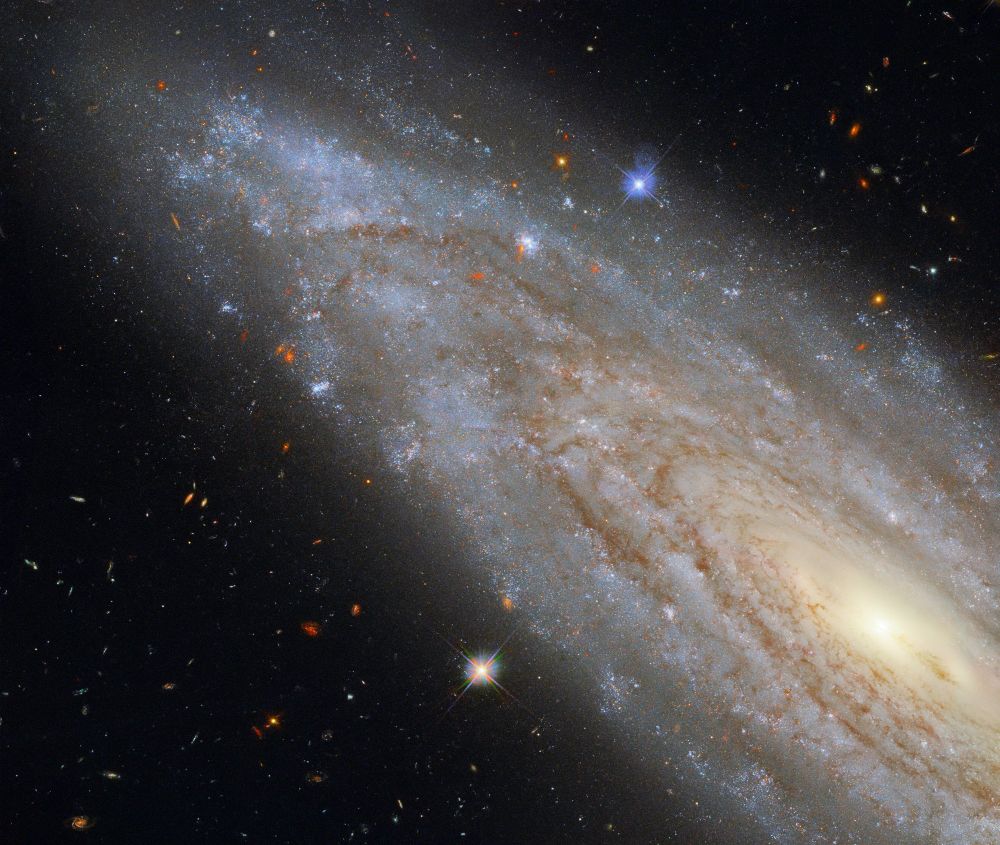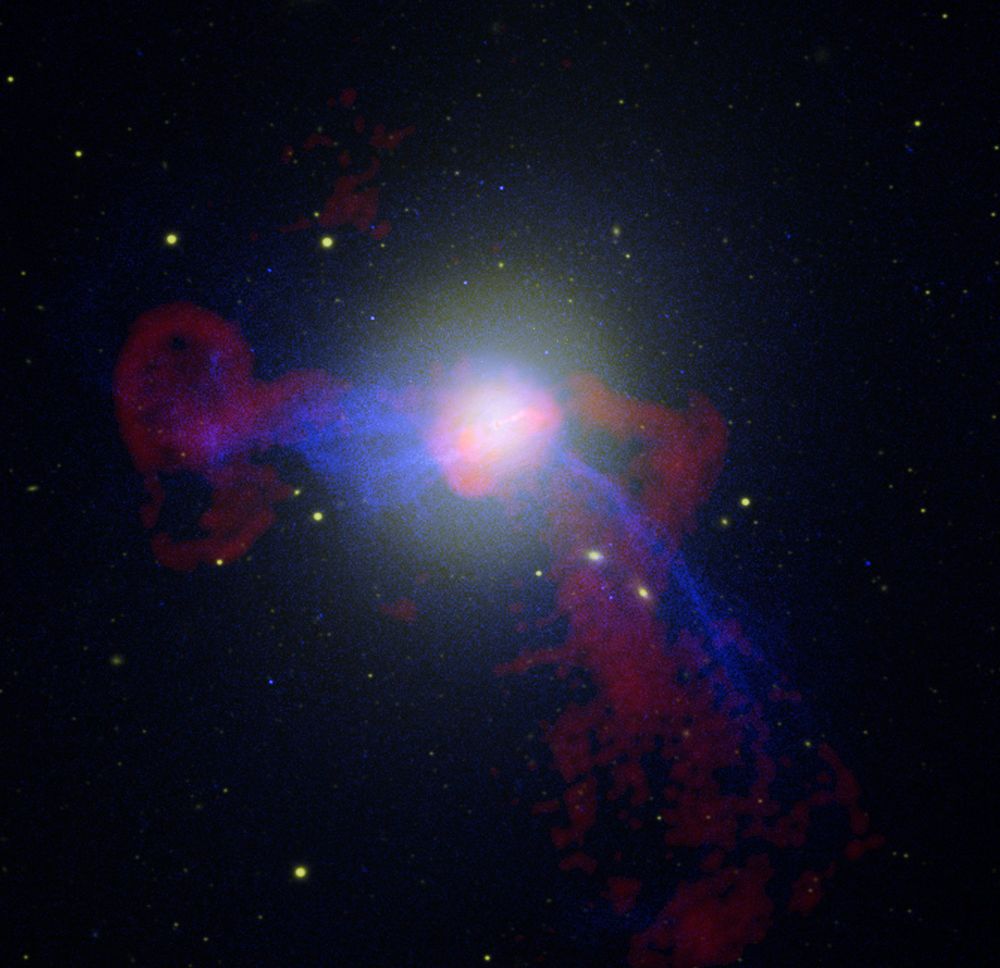
This account is not associated with NASA. Posts are sourced from https://esahubble.org/images and www.flickr.com/photos/nasahubble
Managed by 🔴 @redshift.pics

Hubble has revolutionized our understanding of the universe, capturing stunning views of galaxies, nebulae, and other cosmic phenomena.
Image credit: NASA/Dimazel
Hubble's image reveals the 'string of pearls' comet P/Shoemaker-Levy 9, which is set to collide with Jupiter in July 1994.
esahubble.org/images/opo9322a/

Hubble's image reveals the 'string of pearls' comet P/Shoemaker-Levy 9, which is set to collide with Jupiter in July 1994.
esahubble.org/images/opo9322a/
This illustration depicts a Jupiter-mass planet orbiting the young star Epsilon Eridani, surrounded by a dust disk extending 20 billion miles.
flic.kr/p/2hknq7h

This illustration depicts a Jupiter-mass planet orbiting the young star Epsilon Eridani, surrounded by a dust disk extending 20 billion miles.
flic.kr/p/2hknq7h
Hubble's observations reveal the first optical counterpart of a gravitational wave event, showcasing a kilonova resulting from the merger of two neutron stars in NGC 4993.
esahubble.org/images/heic1717a/

Hubble's observations reveal the first optical counterpart of a gravitational wave event, showcasing a kilonova resulting from the merger of two neutron stars in NGC 4993.
esahubble.org/images/heic1717a/
This graphic illustrates the cosmic web, a structure of dark matter filaments that connects galaxies, as probed by the Hubble Space Telescope.
esahubble.org/images/opo0820b/

This graphic illustrates the cosmic web, a structure of dark matter filaments that connects galaxies, as probed by the Hubble Space Telescope.
esahubble.org/images/opo0820b/
Arp 81, consisting of NGC 6621 and NGC 6622, is a pair of interacting galaxies located in Draco, about 300 million light-years away, with ongoing star formation.
esahubble.org/images/heic0810bd/

Arp 81, consisting of NGC 6621 and NGC 6622, is a pair of interacting galaxies located in Draco, about 300 million light-years away, with ongoing star formation.
esahubble.org/images/heic0810bd/
Abell S1063, located in Grus, showcases gravitational lensing, enabling the observation of galaxies as they were 4 billion years ago.
flic.kr/p/2m3Ef5a

Abell S1063, located in Grus, showcases gravitational lensing, enabling the observation of galaxies as they were 4 billion years ago.
flic.kr/p/2m3Ef5a
Hubble's views of Neptune showcase its extreme weather, with winds at 900 mph and massive storms, highlighting the planet's mysterious atmospheric dynamics.
esahubble.org/images/opo9834e/

Hubble's views of Neptune showcase its extreme weather, with winds at 900 mph and massive storms, highlighting the planet's mysterious atmospheric dynamics.
esahubble.org/images/opo9834e/
The Vela supernova remnant showcases a ghostly bird-like figure created by the intricate filaments of gas from a star that exploded 11,000 years ago.
www.eso.org/public/images/potw2403a/

The Vela supernova remnant showcases a ghostly bird-like figure created by the intricate filaments of gas from a star that exploded 11,000 years ago.
www.eso.org/public/images/potw2403a/
NGC 3254, a spiral Seyfert galaxy, hides an active core that releases as much energy as the entire galaxy, showcasing the power of active galactic nuclei.
esahubble.org/images/potw2124a/

NGC 3254, a spiral Seyfert galaxy, hides an active core that releases as much energy as the entire galaxy, showcasing the power of active galactic nuclei.
esahubble.org/images/potw2124a/
The Whirlpool Galaxy reveals its beauty in two contrasting views: a colorful spiral in visible light and a skeletal dust structure in near-infrared, highlighting the complexity of its formation.
esahubble.org/images/opo1103a/

The Whirlpool Galaxy reveals its beauty in two contrasting views: a colorful spiral in visible light and a skeletal dust structure in near-infrared, highlighting the complexity of its formation.
esahubble.org/images/opo1103a/
The Southern Crab Nebula features an hourglass-like structure, likely the result of a tumultuous interaction between two aging stars obscured by the nebula's light.
esahubble.org/images/opo9932a/

The Southern Crab Nebula features an hourglass-like structure, likely the result of a tumultuous interaction between two aging stars obscured by the nebula's light.
esahubble.org/images/opo9932a/
Caldwell 81, or NGC 6352, is a globular star cluster about 20,000 light-years from Earth, discovered in 1826 and best viewed in the Southern Hemisphere during winter.
flic.kr/p/2jC7MzN

Caldwell 81, or NGC 6352, is a globular star cluster about 20,000 light-years from Earth, discovered in 1826 and best viewed in the Southern Hemisphere during winter.
flic.kr/p/2jC7MzN
The Westbrook Nebula, a protoplanetary nebula, displays a dying star's toxic legacy with jets and clouds from its final stages of evolution.
esahubble.org/images/potw1110a/

The Westbrook Nebula, a protoplanetary nebula, displays a dying star's toxic legacy with jets and clouds from its final stages of evolution.
esahubble.org/images/potw1110a/
This image captures one of three magnified views of a distant galaxy, whose light has taken 13 billion years to reach us, enhanced by the lensing effect of the galaxy cluster Abell 2744.
esahubble.org/images/heic1423d/

This image captures one of three magnified views of a distant galaxy, whose light has taken 13 billion years to reach us, enhanced by the lensing effect of the galaxy cluster Abell 2744.
esahubble.org/images/heic1423d/
The densely packed globular cluster NGC 2210 in the Large Magellanic Cloud is approximately 11.6 billion years old, making it the youngest in its sample.
esahubble.org/images/potw2349a/

The densely packed globular cluster NGC 2210 in the Large Magellanic Cloud is approximately 11.6 billion years old, making it the youngest in its sample.
esahubble.org/images/potw2349a/
Earendel, a star from the early universe, is revealed by gravitational lensing in the Sunrise Arc Galaxy, showcasing the power of the Hubble Space Telescope.
esahubble.org/images/heic2203b/

Earendel, a star from the early universe, is revealed by gravitational lensing in the Sunrise Arc Galaxy, showcasing the power of the Hubble Space Telescope.
esahubble.org/images/heic2203b/
This comparison of the Pillars of Creation taken by Hubble 20 years apart highlights the changes in the Eagle Nebula's structure.
esahubble.org/images/heic1501d/

This comparison of the Pillars of Creation taken by Hubble 20 years apart highlights the changes in the Eagle Nebula's structure.
esahubble.org/images/heic1501d/
At over 150 million light-years in the constellation Libra, NGC 5793 is a Seyfert galaxy known for its luminous center and beautiful dust lane, offering insights into supermassive black holes.
esahubble.org/images/potw1411a/

At over 150 million light-years in the constellation Libra, NGC 5793 is a Seyfert galaxy known for its luminous center and beautiful dust lane, offering insights into supermassive black holes.
esahubble.org/images/potw1411a/
A ground-based view reveals the Large Magellanic Cloud, where the glowing gaseous debris of dying, sun-like stars appears as small, shapeless dots of light.
esahubble.org/images/opo0009b/

A ground-based view reveals the Large Magellanic Cloud, where the glowing gaseous debris of dying, sun-like stars appears as small, shapeless dots of light.
esahubble.org/images/opo0009b/
A dark vortex in Uranus's atmosphere, measured at 1,100 by 1,900 miles, is observed by Hubble, suggesting increased atmospheric activity as the planet approaches its equinox.
esahubble.org/images/opo0647a/

A dark vortex in Uranus's atmosphere, measured at 1,100 by 1,900 miles, is observed by Hubble, suggesting increased atmospheric activity as the planet approaches its equinox.
esahubble.org/images/opo0647a/
Hubble observations reveal VY Canis Majoris undergoes significant dimming due to massive ejections of material, mirroring Betelgeuse's behavior but in a more extreme fashion.
flic.kr/p/2kGZn5J

Hubble observations reveal VY Canis Majoris undergoes significant dimming due to massive ejections of material, mirroring Betelgeuse's behavior but in a more extreme fashion.
flic.kr/p/2kGZn5J
This composite image of M87 reveals bright jets from its massive black hole, visible in radio, X-ray, and optical wavelengths, highlighting its status as the largest galaxy in the Virgo cluster.
esahubble.org/images/heic0815j/

This composite image of M87 reveals bright jets from its massive black hole, visible in radio, X-ray, and optical wavelengths, highlighting its status as the largest galaxy in the Virgo cluster.
esahubble.org/images/heic0815j/
This sequence of Hubble images shows Neptune's cloud cover fluctuations over three decades, tied to the solar cycle's peaks and valleys.
esahubble.org/images/opo2319a/

This sequence of Hubble images shows Neptune's cloud cover fluctuations over three decades, tied to the solar cycle's peaks and valleys.
esahubble.org/images/opo2319a/
This image highlights the area around the Hubble eXtreme Deep Field in Fornax, with the full Moon included for comparison.
esahubble.org/images/heic1214d/

This image highlights the area around the Hubble eXtreme Deep Field in Fornax, with the full Moon included for comparison.
esahubble.org/images/heic1214d/
NGC 7027, known as the 'Jewel Bug' nebula, reveals intricate jets and gas bubbles from its central star, highlighting its dynamic nature.
esahubble.org/images/heic2011c/

NGC 7027, known as the 'Jewel Bug' nebula, reveals intricate jets and gas bubbles from its central star, highlighting its dynamic nature.
esahubble.org/images/heic2011c/

